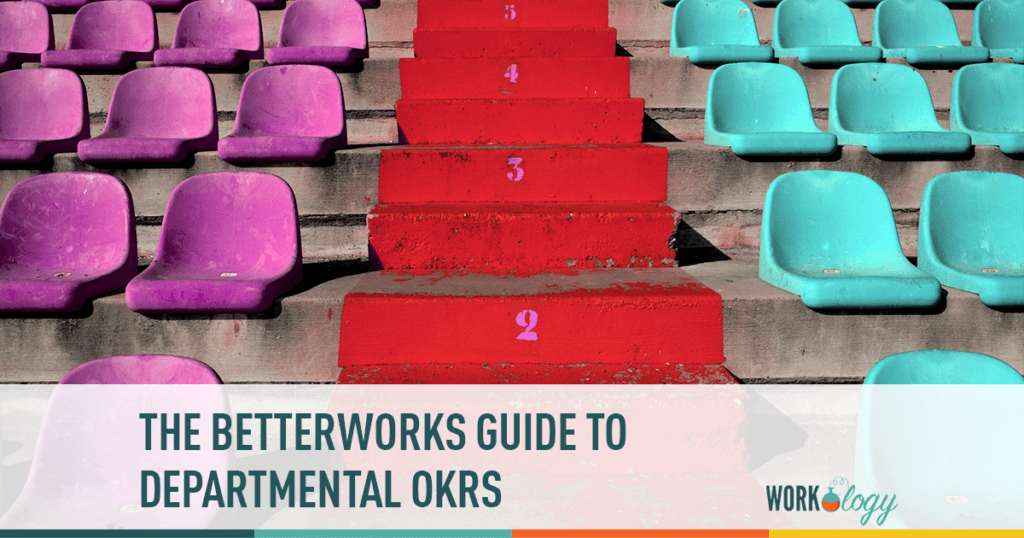Truly motivating a workforce requires nurturing a sense of purpose. Two primary ways of achieving this are providing employees with continuous coaching and feedback from managers who are authentically involved in the employee’s development, and ensuring each employee’s work is aligned to the company’s top goals.
Different Goals for Different Roles: The Betterworks Guide to Departmental OKRs
The OKR (Objectives and Key Results) methodology is a great way of ensuring that organizational alignment. Rooted in collaboration and transparency, OKRs are created with the objective of aligning employee goals and activities to the business priorities while increasing cross-functional coordination. At Betterworks, we recently created a brand-new Ultimate Guide to Utilizing OKRs within Continuous Performance Management® to help organizations create an environment where goals are set collaboratively, clearly articulated, checked in on frequently and measured accurately ensuring that your entire workforce is achieving today’s priorities and are actively developing themselves to be ready to meet tomorrow’s challenges.
However, it’s critical to realize that there is no one-size-fits-all approach to setting and managing OKRs. Every department in your business is unique, so to give your organization a head start we’ve created specific OKR examples for each business department. From Customer Success and Engineering to Sales and Marketing, we’ve created templates to get each of your teams up and running with OKRs as quickly as possible and set them up for ongoing success.
To learn more, check out Betterworks’ Ultimate Guide to Setting Departmental OKRs to learn more about creating a goals process that truly drives results for your business.








